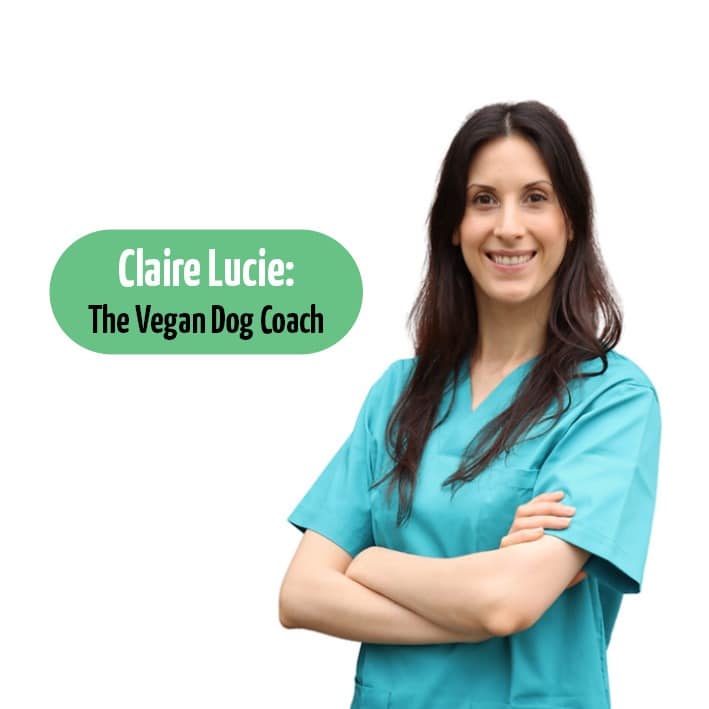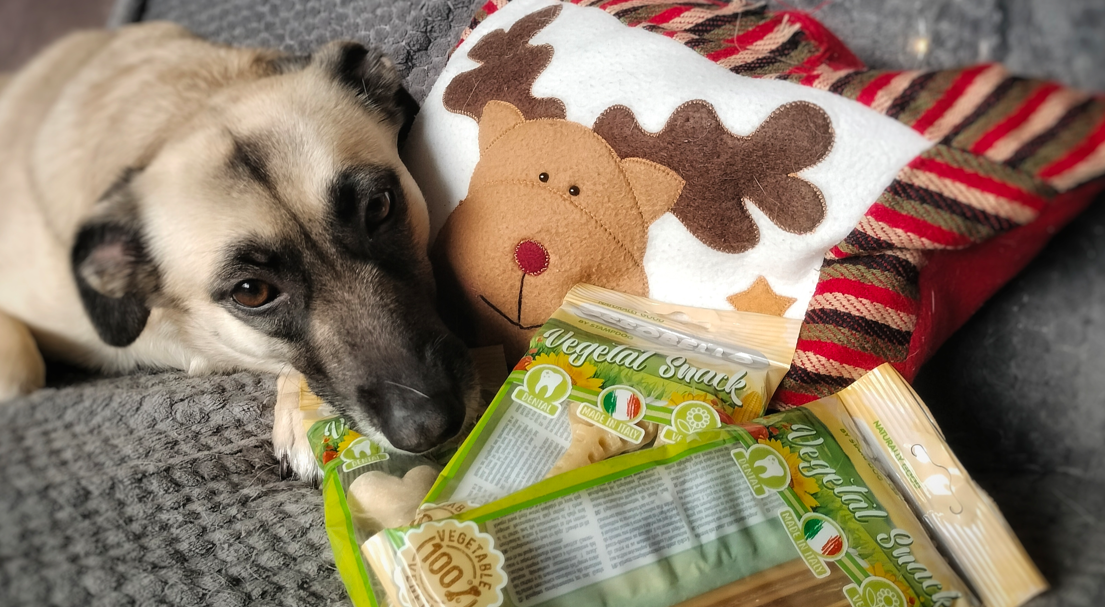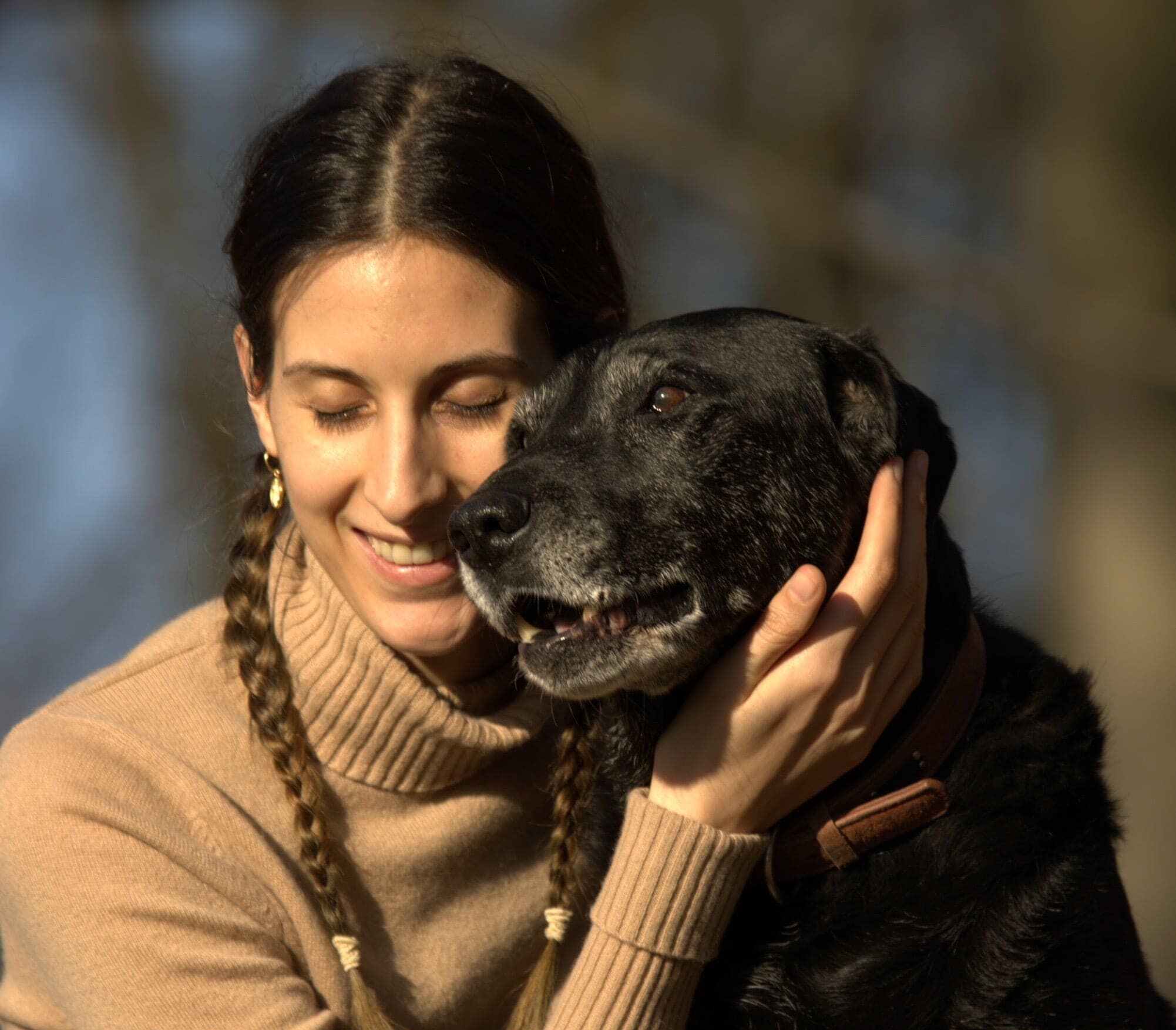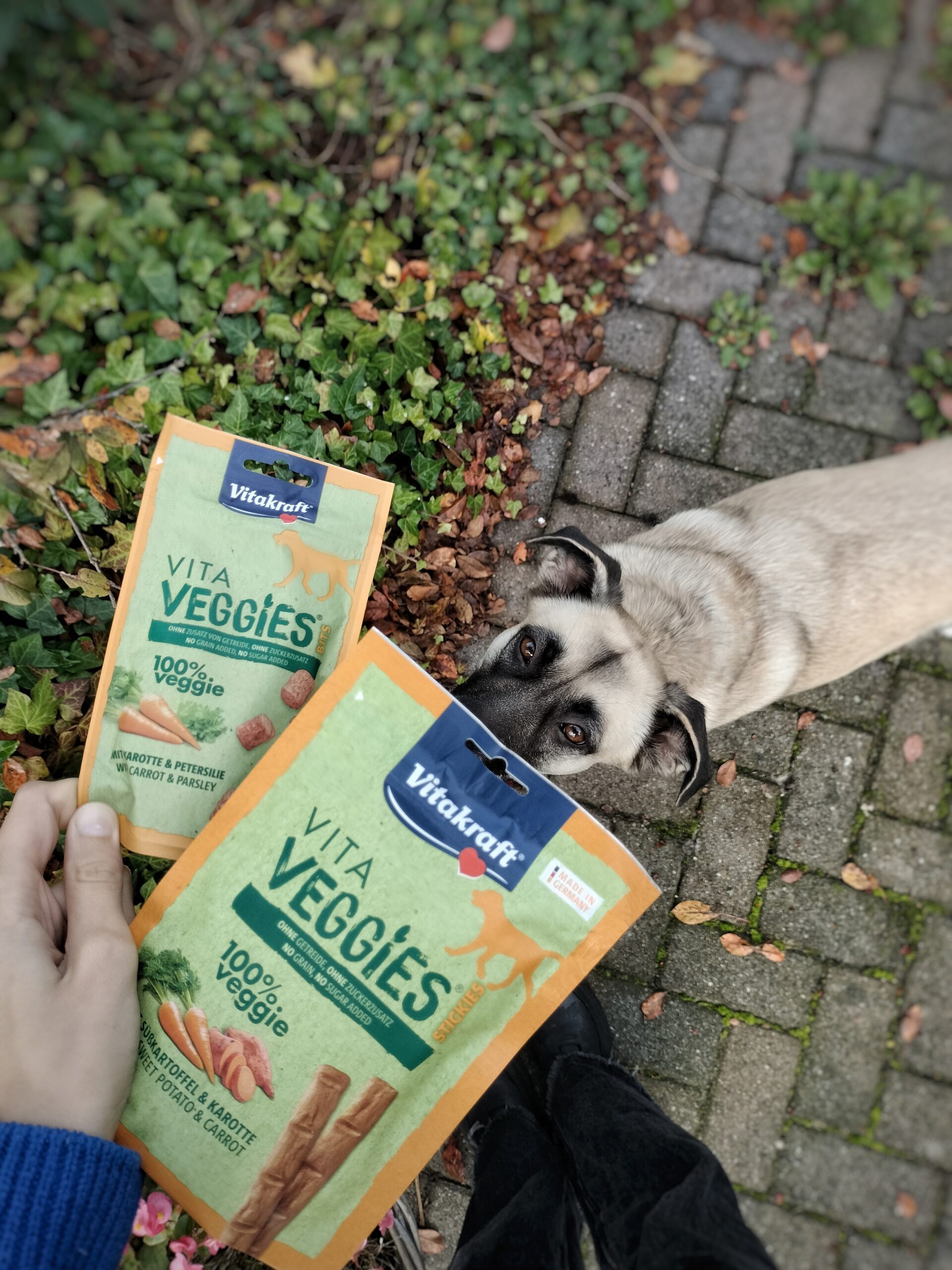Home / What Causes Tartar On My Dogs Teeth And How Can I Avoid It Naturally

What causes tartar on my dog’s teeth and how can I avoid it (naturally)?
03/10/2024
9 minutes
Author: Claire Lucie
You’ve undoubtedly heard of tartar, this discolouring and damaging accumulation on your dog’s teeth. Tartar begins as plaque, a substance that accumulates on your dog’s teeth, and progresses to cause more dental and general health issues. However, there are surprising causes of this avoidable problem, as well as a few simple procedures you can do to prevent your dog from developing it!
What is tartar?
Tartar and plaque are often confused with each other, but while these two terms are linked, there are two distinct conditions.
Plaque is a sticky white substance that accumulates around the gums and surface of the teeth over time, causing bacteria to flourish. Over time, without an appropriate approach to removing it, plaque builds up and can lead to tooth decay, gum disease, and tartar.
Tartar is the result of excess plaque, mineralizing and becoming hard. It is also known as dental calculus, due to the minerals in saliva calcifying the build-up of plaque.
Why does tartar develop in dogs?
One of the main (yet too little talked about) reasons why tartar is forming on a dog’s teeth, is the lack of natural rubbing of the solid food against the teeth of the animal.
At home, we usually feed our four-leg friends with any precooked or special dog’s food with a softening concentrate. But chewing is essential to dogs, not only for teeth and dental health, but also for healthy cognitive functions.
But the root cause of the development of tartar, is Streptococcus, a group of bacteria, naturally present in your dog’s oral microbiome.
Most Streptococcus bacteria are harmless or beneficial.
However, some Streptococcus bacteria are harmful. Those harmful Streptococcus bacteria can overgrow as a result of external factors, most commonly an unsuitable diet.
Specific bacteria of the Streptococcus species, have the ability to form biofilm known as dental plaque on tooth surfaces, and Streptococcus mutans is considered to be the most important bacteria in the initiation and progress of plaque in combination with lactobacilli.
The primary bacteria responsible for plaque formation and, as a result, tartar production rely nearly entirely on refined carbohydrates for carbon and energy.
The high and frequent intake of ultra-processed foods has been strongly associated with the development of plaque, tartare and dental diseases in dogs. According to scientific data:
” Diet seems to be one determining factor on how the gingival tissues react towards dental plaque accumulation, which should be considered in classifications and etiological hypotheses. Current Western dietary conditions seem to have a profound pro-inflammatory effect on periodontal tissues, while wholefood diets with lots of fiber and micronutrients, as well as omega-3 fatty acids, are associated with a lower level of inflammation in the periodontium.”
What science tells us about Tartar in dogs
Your dog’s mouth is populated by a diverse spectrum of microbial species that interact with one another and with their host via intricate pathways, resulting in a harmonious coexistence, called eubiosis. This community of micropia species is called oral microbiome.
Eubiosis is the natural state of your dog’s oral microbiome, in which both beneficial and harmful bacteria, fungi, viruses, archaea, and eukaryotic organisms coexist, resulting in a balance.
This balance of beneficial and harmful bacteria is critical for the health of your dog’s teeth, gums, and oral tissues. It serves the purpose of keeping your dog’s mouth, teeth, gums and tissues healthy.
However, external factors such as ultra-processed foods or an unadapted diet, certain medications especially antibiotics and anti-inflammatory medicine, pesticide exposure, stress and anesthesia can cause structural damage to the microbiome composition, resulting in an overgrowth of harmful bacteria compared to healthy bacteria, a condition known as dysbiosis.
Specific region of your dog’s body has its own microbiome, including the skin microbiome, the gut microbiome, the genital microbiome, and the oral microbiome.
Each of these microbiomes are strongly connected, functioning in harmony with one another.
As a result, when one of your dog’s microbiomes is in dysbiosis, all of your dog’s other microbiomes are negatively impacted, which has a global negative effect on your dog’s overall health and opens the pathways to disease.
For example, the microbiota of the oral cavity is the one that most influences the lung microbiota of the dog, and therefore, the oral microbiota is strongly interrelated with the pulmonary one, which in turn exerts its influence on the gut microbiome.
What are the consequences of tartar for your dog?
Oral microbiota dysbiosis can be observed in most oral diseases (i.e. periodontal disease).
source: national library of medicine
Aside from the effects of the oral microbiome on oral and dental health, numerous studies have discovered that an imbalance, or dysbiosis, of the oral microbiome contributes to the development of cancer, particularly pancreatic cancer.
According to the Journal of the National Cancer Institute, dysbiosis of the oral microbiome is associated with lung cancer risk; some of those findings may be found here and here.
The spread of harmful oral bacteria throughout the canine body has been linked to a variety of systemic disorders, including diabetes, epilepsy, stroke, and heart disease.
The oral microbiome has been shown to have an important role in the development of arthritis in both dogs and humans (the arthritis development process in dogs is identical to that of humans).
Studies in animals and humans have indicated that oral bacteria can translocate to the gut and change its microbiota and immune defence.
One example is P. gingivalis, a harmful bacteria present in your dog’s oral cavity. It is controlled by healthy bacteria in the oral microbiome.
Studies demonstrate that P. gingivalis might affect the gut microbiota, leading to dysbiosis.
A large majority of canine diseases are associated with a dysbiosis of the gut microbiome ( in correlation with other microbiomes ) including, obesity, diabetes, cardiovascular disorders, cancer, inflammation-related diseases, gastrointestinal conditions, allergies, arthritis, depression, anxiety, and liver disease..
Considering the scientific evidence, tartar undeniably appears to not be “just something on the teeth” but rather a visible indication of far larger health problems.
How do I naturally prevent tartar in my dog?
The daily carrot; the single most effective method for preventing tartar is to feed your dog a carrot once a day and allow them to chew it. If your dog doesn’t like carrots, consider another hard-textured vegetable, such as broccoli trunk.
If you feed your dog a processed diet, make sure to include fresh veggies, fruits, and legumes on a daily basis, to help maintain a diverse and healthy gut and oral microbiome.
Ensure your dog’s diet contain prebiotics from fresh ingredients as often as possible; it include leafy green, banana, unrefined wholegrains, cabbage, grounded almonds, legumes, oats, and apples. Those prebiotic foods are the favourite foods of the healthy bacteria in your dog’ gut microbiome.
If your dog has undergone surgery or has taken medication, particularly antibiotics or anti-inflammatory medications, it’s critical to assist them in restoring their gut and oral microbiome to prevent plaque accumulation and tartar development.
What do I do if my dog already has tartar?
- Make sure your dog gets a daily dose of high-quality, plant-based probiotics to help support and boost the quality and quantity of beneficial bacteria in their oral microbiome.
- Probiotics play a significant role in maintaining and improving the overall oral health of your dog.
- Regular probiotics contain animal proteins, which, when ingested, even occasionally, trigger micro-inflammation through your dog’s organs and tissues, which will create further damage to your dog’s gut and oral microbiome.
- Ensure your dog’s diet contains prebiotics from fresh ingredients as often as possible; this includes leafy greens, bananas, unrefined wholegrains, cabbage, grounded almonds, legumes, oats, and apples.
The limitations of traditional approach
Brushing your dog’s teeth
While brushing your dog’s teeth does not cause any harm, it is a laborious and time-consuming process.
Teeth brushing will temporarily remove harmful bacteria from your dog’s teeth, but it will have no effect on the underlying cause: an overgrowth of harmful bacteria in your dog’s oral microbiome. As long as this issue is not addressed and cured, plaque will continue to develop, with a high risk of tartar formation.
Chewing and dental sticks
Caution should also be used when using chewing sticks, as they often contain high levels of sodium, harmful additives, and preservatives, as well as being classified as processed to ultra-processed foods, which, as previously stated, feed the harmful Streptococcus bacteria in your dog’s oral cavity.
Surgical removal
It’s very important to conduct your own research before deciding to have your dog placed under general anaesthesia for tartar removal for two main reasons:
While the dog kidney and the human kidney have minor structural differences, both function in the same way, and researchers have found that kidney injuries in dogs are similar to kidney injuries in humans. And why does this matter?
An association between acute kidney injury and general anaesthesia is well-documented, and the administration of general anaesthesia may induce a reduction in renal blood flow which decreased by 38 percent to 50 percent during anaesthesia, which has been shown to commonly lead to permanent kidney damage.
Scientific research has repeatedly shown that anaesthesia, even over a relatively short period of time, creates unfavourable alterations to the gut microbiome, resulting in a damaging effect on your dog’s gut microbiome, paving the way for subsequent illnesses.
Very interesting findings about this subject have been published in the Journal of Anesthesiology.
With tartar prevention is key! And you can never start too early!

Claire Lucie Sonck
The science of plant-based nutrition for dogs
Certified, CMA-registered canine nutritionist;
Founder The Vegan Dog Coach;
Instagram : @thevegandogcoach
Contact : [email protected]
About the author
Claire Lucie is a UK-certified canine nutrition coach, founder of The Vegan Dog Coach, and a member of the prestigious Complementary Medical Association. Her mission is to improve the health and longevity of 100 million dogs worldwide by promoting a plant-based diet, based on the latest insights in nutrition and canine health. Over the past two years, she has dedicated her life to studying more than 250 scientific studies on the impact of nutrition on the health and longevity of dogs!
Visit www.thevegandogcoach.com for free resources, consultation, and professional guidance in plant-based canine nutrition, inspiring testimony from plant-based dogs and vets, free recipes, and all the science behind your dog’s plant-based diet and nutrition.
Disclaimer
This material is intended for educational purposes only. No information in this present article, regardless of date, should ever be used as a substitute for direct veterinary advice from your veterinarian or other qualified canine health professional.
The vegan dog coach, Claire Lucie Sonck, VegeVriend, and their respective employees or collaborators cannot be held liable for any losses, injuries, or damages resulting from the use of any information contained in the present article.







